The Work Boulevard
Simple Mindfulness Practices for Working Professionals
In our previous article, “The Importance and Benefits of Mindfulness at Work”, we explained what mindfulness is, why it is important for the workplace, and how mindful practices help us:
alleviate stress,
stay focused for longer,
become more productive,
develop emotional resilience,
communicate better, and
improve our leadership skills.
Here are some simple mindful practices recommended by leading experts that working professionals like you can incorporate into your routine for maximum results. And no, we’re not suggesting you sit in lotus pose at your desk chanting “OM”. These practices can be done without compromising your all-important corporate image. Promise!
Simple mindful practices you can do in the office
As with most things in life, continuity is key with mindfulness. But how do we take our mindfulness practices from the yoga mat or meditation cushion to the office chair?
Start small.
Mindfulness is developed in MOMENTS. The majority of us are not fully present for more than a moment at a time. But these moments are powerful. Don’t underestimate them.
Just as a braking momentarily helps a speeding car come to a stop much sooner, so a moment of mindfulness in your workday can make a significant difference to your own mental health as well as that of others around you.
Read: The Importance and Benefits of Mindfulness at Work
The following practices may seem insignificant, but we encourage you to try them out and experience their effectiveness for yourself.
Take a breath
You can do this so subtly, no one will notice. Try it now as you’re reading this. You don’t even have to close your eyes to get the benefits. Just one slow breath signals your nervous system to relax, and you will feel better almost instantly.
Close your mouth and take a slow, deep breath in through your nose, without moving your shoulders. Notice your diaphragm expanding. Breathe out fully until your lungs are empty. Take a few more slow breaths like this if you can.
The breath is powerful because it impacts your mental state as well as physical functions like your nervous system, blood pressure, heart rate and hormones.
Take a look at this list of breathing techniques from Calm.com that you can try out anytime at work.
Feel your feet on the ground
One of the fastest ways to ‘snap out of it’ and come back to your senses is to literally come back to your senses.
The sense of touch is the easiest to focus on because it is there 24/7 (you’re not always tasting or smelling something, but you are always touching something, even if it’s just your clothes).
This is a good grounding technique to use when you feel anxious, because somehow, awareness of our feet on the ground helps us feel safe and calm.
Bring your full attention to the soles of your feet and see if you can feel the ground underneath them. You can do this with your eyes open while sitting or walking, so it’s a great one for the workplace. You don’t have to change the way you walk, just bring your attention to your feet for a few moments.
Do a body scan
While your mind finds it hard to stay present, your body is always in the present moment. So, reconnecting with the body is an effective way to bring the mind back to the present.
This is great for when you catch yourself ruminating about something and you’ve told yourself to drop it, but you’re not dropping it. A body scan pulls your attention away from the mind, slowing those spinning wheels and bringing relief from the tension.
Start from your head and scan your attention down your body (you can go as fast or as slow as you have time for), just noticing what’s going on without changing it, judging it or trying to fix it. Notice any sensation whether it’s heat, cold, tingling, itching, numb, pain, tightness… anything, and let it be.
You may need to close your eyes the first few times you do this, but with practice, you’ll be able to do it anytime, anywhere.
Here’s a guided practice from Eckhart Tolle to start you off.
Visualise your anchor
This is helpful when you are caught in a downward spiral of negativity. Most of us have an emotional anchor of some kind that helps us feel happy or positive. It could be a person, place or animal that you love and feel safe with.
After a difficult conversation or meeting, when the negativity is starting to overwhelm you, visualise your anchor for a few moments. This isn’t to distract you from what’s going on, but to remind you that there’s more to life than this one negative thing. Perhaps, if you are feeling alone, visualising a person you love helps remind you that you are not alone.
Visualising helps you see the bigger picture.
Spiritual Teacher Michael Singer said he developed the habit of visualising a tiny earth spinning in empty space every time he walked through a door. He said it helped him immensely to handle the stress of running a billion-dollar company.
Repeat a calming phrase or mantra
Not out loud. Just in your head, repeat a phrase or mantra a few times. Words are more powerful than we realise. Research shows that the repetition of a word or sound can help lower cortisol levels, improve concentration, and stabilise your mood.
Repeating a calming phrase gives your mind a break from chewing on whatever is disturbing you. It gives it something more positive (or neutral) to do.
A mantra doesn’t have to be Sanskrit or spiritual. It can be something encouraging like, “I can handle this”, or even, “I’m okay, I’m okay, I’m okay”. Even a neutral word like “one” works well.
In 2015, the Brain and Behavior journal published a study where 23 volunteers who had never meditated before were asked to silently repeat the word “one”. This simple action was found to globally calm all parts of the brain in each and every participant.
Think of one thing to be grateful for
Gratitude is interesting because it’s impossible to feel stressed and grateful at the same time. Harmful mental states like stress and anxiety are rooted in fear. Fear that we won’t get what we want, or that we will get what we don’t want.
Gratitude, on the other hand, is rooted in love. Remembering something we are grateful for brings us out of our fear and into a feeling of security and relief.
Neuroscientific research has found that when we express gratitude, “our brain releases dopamine and serotonin, the two crucial neurotransmitters responsible for our emotions, and they make us feel ‘good’. They enhance our mood immediately, making us feel happy from the inside.”
All of us have something to be grateful for, no matter how bad things seem at work. We have a roof over our heads, enough food, people we love…even the simple fact that we are alive is something to be grateful for.
Remember that mindfulness is a deeply personal experience. Everyone approaches it differently and reacts differently to each technique. So it takes time to experiment and find the ones that are easiest for you.
Which mindful practice works best for you during your workday? Feel free to share them with our community in the comments below!
How to integrate mindful practices into your workday
These mindful practices may seem simple enough, but the hard part is REMEMBERING to do them when caught up in the whirlwind of the workday.
This is where habit-building comes in.
“Atomic Habits” author James Clear explains, “One of the best ways to build a new habit is to identify a current habit you already do each day and then stack your new behaviour on top. This is called habit stacking…Rather than pairing your new habit with a particular time and location, you pair it with a current habit.”
Think about something you do every day at work, then stack a mindfulness habit on top of that. Examples include:
Taking three deep breaths before replying to any email
Doing a body scan every time you go to the bathroom
Feeling your feet on the ground every time you go to get a drink
Visualising a person you love before calling a client
Repeating a mantra in your head while drinking your tea or coffee
In addition, researchers have found that practising mindfulness at certain strategic moments in the workday to be particularly effective. Harvard Business Review published research by Lindsey D. Cameron and Andrew Hafenbrack who conducted a series of field studies exploring the effects of different mindfulness-focused meditation practices in real-world workplace settings.
“To determine the best time to integrate mindfulness into your own workday, take notice of when you tend to be the most stressed out. Once you’ve identified the time, place, or even person that’s often associated with your stress, start building a habit of mindfulness to strategically address those moments in your day.”
For example, the effectiveness of a mindfulness habit is much greater when you do it:
Just before a challenging meeting
Before taking a call with a difficult client or colleague
Before an important presentation
Before taking an exam
Before making an important decision
You don’t have to change your schedule too much to incorporate mindful practices into your workday. Most people have found that simply arriving early to these important events and finding a private space in which to practice is good enough.
As you begin to experience the benefits of these practices, you’ll be more motivated and find it easier to sustain the habit of practising mindfulness throughout your workday.
Read: The Importance and Benefits of Mindfulness at Work
Leave a Reply
Related Posts
Categories
GET IN TOUCH



